|
Books Should Be Free Loyal Books Free Public Domain Audiobooks & eBook Downloads |
|
|
Books Should Be Free Loyal Books Free Public Domain Audiobooks & eBook Downloads |
|
Top Authors |
|---|
|
Book type:
Sort by:
|
By: P. G. Wodehouse | |
|---|---|
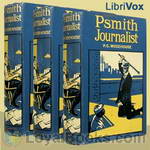 Psmith, Journalist
Psmith, Journalist
Psmith takes over editing a paper while the usual editor is away on vacation. He takes on a local slum lord, and divers alarums ensue. (description by Psuke Bariah) | |
 Their Mutual Child
Their Mutual Child
Their Mutual Child (aka The Coming of Bill and The White Hope) is full of the loveable characters, preposterous situations, and opportunities to chuckle, if not outright laughs, that we expect from PG Wodehouse. It lacks the frantic slapstick of some Wodehouse comedy, but has a quieter more reflective humour. Kirk, the erstwhile hero, is a typical Wodehousian hero. At the beginning of the story, he is thoroughly likeable, a healthy, but a somewhat weak and malleable fellow. He dabs at beings a painter for a living, and runs with a gang of hangers-on, who sponge off him... | |
 William Tell Told Again
William Tell Told Again
This is the classic story of William Tell - Swiss patriot and great apple-shooter - as seen through the eyes of English humorist P.G. Wodehouse. No Swiss were (permanently) injured in the telling of this story; however, results differed for Austrian tyrants. The original volume also included a humorous poem encapsulating the whole Tell legend, written by John W. Houghton to accompany the sixteen color illustrations. For this audiobook, the stanzas have been collected and read as a single poem. (Introduction by Mark F. Smith) | |
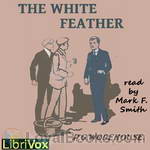 The White Feather
The White Feather
Sheen, a member of Seymour's House at Wrykyn School, flees from an unexpected assault by town boys. His colleagues wade into the fight with relish, acquiring bruises and sore heads, but in the fracas, Sheen is missed, and the story makes the rounds of Wrykyn that when blows were traded, Sheen "funked it." Honor in such institutions depends on reliably standing with your House. As punishment for his defection, Sheen is "cut" - treated as if he did not exist. In a later expedition into town, Sheen is set upon by the town bullies and finds that when retreat is no option, he can take their blows and fight against odds... | |
By: Eleanor H. Porter (1868-1920) | |
|---|---|
 Pollyanna
Pollyanna
This is a timeless classic expressing the universal message that every aspect of life should be looked at in a positive way. It follows the actions of its protagonist, eleven-year old Pollyanna who goes to live with her stern Aunty Polly, where she faces many challenges with a smile on her face. The best-selling novel begins with the introduction of Pollyanna who goes to live in Vermont with her strict Aunt Polly after the death of her parents which have left her an orphan. The young heroine refuses to give in to her seemingly gloomy situation and instead chooses to look at the bright side of things... | |
 Just David
Just David
A delightful story supporting the notion of finding beauty in all aspects of life, Just David follows a young boy, who slowly transforms the lives of those around him, as he teaches them to embrace the smaller things in life. The classic presents an encouraging tale to look beyond the horizon and not allow the world to dictate one’s action. The story begins with the introduction of a charismatic ten-year old boy David, who together with his father lives in the serene and secluded mountains... | |
 Pollyanna Grows Up
Pollyanna Grows Up
Pollyanna, now cured of her crippling spinal injury, and able to walk again, goes to live in Boston with Mrs. Carew, a heart-broken woman searching for her lost nephew. Aunt Polly goes abroad with Pollyanna’s new Uncle, Dr. Chilton. While in Boston, Pollyanna meets new friends and has several interesting adventures… A startling change in Aunt Polly’s and Pollyanna’s circumstances require Pollyanna to come up with a workable solution. Pollyanna’s solution brings all her new friends from Boston and her old friends in Beldingsville together. Pollyanna also discovers she has to make a choice. Who will win her heart? | |
 Oh, Money! Money!
Oh, Money! Money!
Mr. Stanley Fulton is worth millions, but he has no one to leave his money to except some unknown distant cousins. In order to find out how they would handle a fortune, he decides to give each of them $100,000 dollars during his life, and go – incognito - to live in their midst! Who will prove worthy to inherit his millions and will his deception be discovered?Eleanor H. Porter was an early 20th century author of children’s literature and novels. Her most well known book was “Pollyanna” and it’s sequel, “Pollyanna Grows Up”. | |
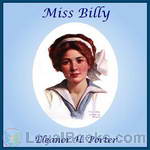 Miss Billy
Miss Billy
Mr. Neilson was determined to name his first child after his boyhood chum, William Henshaw. When the baby disappointed him by being a girl, he was consoled by naming her Billy. Miss Billy, now 18, orphaned and all alone in the world, takes her lawyer’s suggestion to ask her namesake to take her in. Only one little problem – Mr. Henshaw did not know of her existence, and then mistakenly thinks that Billy is a boy!Eleanor H. Porter was an early 20th century author of children’s literature and novels. Her most well known book was “Pollyanna” and it’s sequel, “Pollyanna Grows Up”. | |
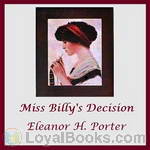 Miss Billy's Decision
Miss Billy's Decision
When Miss Billy closed, Miss Billy and Bertram were happily engaged. In this first sequel to Miss Billy, will the path to wedded bliss run smooth or will misunderstandings and heartache cross their path? Find out in “Miss Billy’s Decision”! | |
By: Jesse Lyman Hurlbut (1843-1930) | |
|---|---|
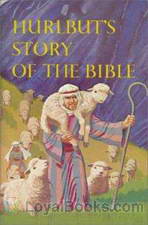 Hurlbut's Story of the Bible
Hurlbut's Story of the Bible
As a parent, many of us would like our children to be familiar with our sacred books, no matter to which religion or faith we belong. However, very young children may find the language and the ideas quite difficult to assimilate. Yet the stories are so memorable and valuable that we want our children to know them as early as possible. Published in 1905, Hurlbut's Story of The Bible – 1 is a wonderful compilation of some of the most important and delightful stories to be found in both the Old and New Testaments... | |
By: Elizabeth Gaskell (1810-1865) | |
|---|---|
 North and South
North and South
Mrs. Gaskell as she was popularly known, had a hard and lonely childhood, spent with various aunts and relatives after her mother died and her father left her. The young Elizabeth met and married a clergyman and moved to Manchester with him. It was here that she developed her strong sense of social justice and the themes which form the basis of her writing. Her biography of her dear friend Charlotte Bronte is considered a classic and provides a wonderfully human picture of the Yorkshire genius and her equally talented, tragic family... | |
 Wives and Daughters
Wives and Daughters
This story opens with a young girl on a visit to a stately mansion, which is a local tourist attraction. Exhausted and waiting for the rest of the party to finish the tour, she falls asleep under a tree. She is discovered by the daughter of the house and the governess, who comfort her and put her to bed in the governess's room, promising to wake her before the tourists leave. However, the governess forgets and the girl is stranded in the mansion. Her father arrives to take her home. Many years later, her father brings the same governess home as his new wife... | |
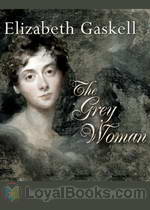 The Grey Woman
The Grey Woman
A “Bluebeard” story in which a young woman marries a man whom she discovers has killed his previous wives and is trying to kill her as well. | |
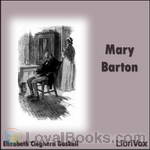 Mary Barton
Mary Barton
Mary Barton is the first novel by English author Elizabeth Gaskell, published in 1848. The story is set in the English city of Manchester during the 1830s and 1840s and deals heavily with the difficulties faced by the Victorian lower class. The novel begins in Manchester, where we are introduced to the Bartons and the Wilsons, two working class families. John Barton reveals himself to be a great questioner of the distribution of wealth and the relation between the rich and the poor. He also relates how his sister-in-law Esther has disappeared after she ran away from home... | |
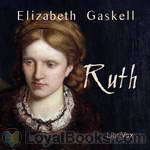 Ruth
Ruth
The book is a social novel, dealing with Victorian views about sin and illegitimacy. It is a surprisingly compassionate portrayal of a ‘fallen woman’, a type of person normally outcast from respectable society. The title of the novel refers to the main character Ruth Hilton, an orphaned young seamstress who is seduced and then abandoned by gentleman Henry Bellingham. Ruth, pregnant and alone, is taken in by a minister and his sister. They conceal her single status under the pretence of widowhood in order to protect her child from the social stigma of illegitimacy... | |
 The Life Of Charlotte Brontë
The Life Of Charlotte Brontë
Charlotte Brontë was a British author, the eldest of the three famous Brontë sisters who have become standards of English literature. She is best known for her novel Jane Eyre, one of the greatest classics of all time. Just two years after Charlotte’s death, her friend Elizabeth Gaskell wrote her biography. Want to know more about Charlotte Brontë? If you do, please read this biography. | |
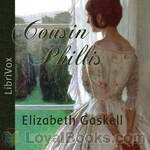 Cousin Phillis
Cousin Phillis
Cousin Phillis (1864) is a novel by Elizabeth Gaskell about Paul Manning, a youth of seventeen who moves to the country and befriends his mother's family and his second cousin Phillis Holman, who is confused by her own placement at the edge of adolescence. Most critics agree that Cousin Phillis is Gaskell's crowning achievement in the short novel. The story is uncomplicated; its virtues are in the manner of its development and telling. | |
By: Walter Besant (1836-1901) | |
|---|---|
 Stories of Successful Marriages
Stories of Successful Marriages
A collection of short stories by celebrated authors on the subject of successful marriages. Pieces originally appeared in other publications between 1858 and 1900 and were brought together by Walter Besant. | |
By: Elizabeth Gaskell (1810-1865) | |
|---|---|
 My Lady Ludlow
My Lady Ludlow
This novella by the acclaimed Elizabeth Gaskell follows the reminiscences and life of aristocratic Lady Ludlow, told through the eyes of one of her charges, the young Margaret Dawson. Lady Ludlow epitomizes the unwillingness of the old English gentry to accept the progression of social reform and technology, such as education for the poor and religious leniency. She reminisces about her friends in the French revolution and tries to protect and guide the numerous young ladies she has taken under her care. | |
 Dark Night's Work
Dark Night's Work
Love, murder and class commentary in Mrs Gaskell's usual brilliant style! This novel was originally serialised and published by Charles Dickens, with whom Mrs Gaskell had several disagreements. She chose to avoid melodrama and concentrate on psychological realism to produce a moving story of people meeting and parting across class divides. | |
 Moorland Cottage
Moorland Cottage
"Maggie Brown is torn between her mother who constantly tells her to live for her selfish brother (to whom she gives all her love) to her wish to marry Frank and live for herself. Maggie's plight for independence shows the change in women's role, which started to take place during that time. But it also keeps to the tradition of an almost Cinderella story: the pure woman does the best for everyone but herself and is rewarded for that. In addition, this is a very interesting story, written in Gaskell's remarkable style. When you read it, you are transported to another time, and place". | |
By: Gaston Leroux (1868-1927) | |
|---|---|
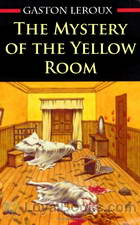 The Mystery of the Yellow Room
The Mystery of the Yellow Room
One of the first locked room mysteries, The Mystery of the Yellow Room focuses on a supposedly impossible crime which has been committed within a locked room. The novel was initially published in the French periodical L’illustration, and was later published as a book in 1908. It is the first of a series of novels featuring the famous fictional reporter Joseph Rouletabille. The mystery begins when Joseph Rouletabille, a reporter and amateur sleuth is sent to investigate a crime scene at the Château du Glandier, home to renowned chemist Joseph Stangerson... | |
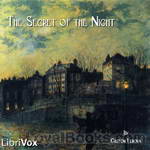 The Secret of the Night
The Secret of the Night
Gaston Leroux, perhaps best known as the author of The Phantom of the Opera in its novel form, was also the author of a popular series of mystery novels featuring a young journalist cum detective named Joseph Rouletabille. It is most likely that Leroux styled his hero after himself. Rouletabille was in the tradition of other great detectives who solved their cases by pure deductive reasoning. Much as Sherlock Holmes, who eliminated the impossible and concluded that whatever remained, however improbable must be the truth, Rouletabille included the known facts about the case and eliminated everything that was not a known fact, no matter how much it appeared to relate to the case... | |
By: Edith Wharton (1862-1937) | |
|---|---|
 The Age of Innocence
The Age of Innocence
If you've watched and loved Winona Ryder playing the innocent May Welland in the 1993 film adaptation of Edith Wharton's sweeping novel about class-consciousness in nineteenth century America, you will certainly enjoy reading the original. Though Martin Scorcese's brilliant work was certainly true to the spirit of the original novel, no film can reproduce the charm of language and turn of phrase employed by one of America's greatest writers. The Age of Innocence was Edith Wharton's 12th novel and is located in familiar Wharton territory... | |
 Afterward
Afterward
A short story classified under the American Gothic genre, the piece depicts an eerie set of events following the distressing occurrences within the Boyne household, as their dream relocation takes a drastic turn. Wharton cleverly weaves together Gothic themes including horror, retribution, and despair to create a dynamic plot which is additionally aided by the use of foreshadowing, an uncanny setting, and the reflective voice of its character. Divided into five parts, Afterward introduces newly rich couple Mary and Ned Boyne, who decide to make their dream move to England after Ned strikes a good business investment... | |
 Ethan Frome
Ethan Frome
Ethan Frome is a novel published in 1911 by the Pulitzer Prize-winning American author Edith Wharton. It is set in the fictitious town of Starkfield, Massachusetts, New England, where an unnamed narrator tells the story of his encounter with Ethan Frome, a man with dreams and desires that end in an ironic turn of events. ( | |
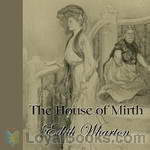 The House of Mirth
The House of Mirth
Wharton's classic story of an aging (by Victorian-era standards) spinster socialite who would rather marry for money than for true love. | |
 Summer
Summer
Wharton's 1917 novella Summer, like her more famous work Ethan Frome, is set in a very small rural New England town. Charity Royall longs to escape the claustrophobic confines of North Dormer and the inappropriate advances of her guardian Mr. Royall, who adopted her as a child from the nearby Mountain community. Hope arrives in the form of city boy Lucius Harney, who has come to research the architecture of the region; but will his presence in Charity's life mean her salvation - or her undoing? (Introduction by Elizabeth Klett) | |
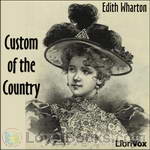 Custom of the Country
Custom of the Country
Edith Wharton was a novelist of manners of late 19th Century New York “Society”, who spent much of her life in France. In this novel she tells the story of Undine Sprague, the thrice- (or more) married, upwardly mobile beauty from “Apex City”, transplanted to New York, and finally to France, leaving the dead and wounded in the wake of her “experiments in happiness”. | |
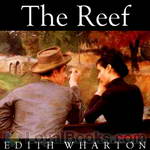 The Reef
The Reef
George Darrow, Anna Leath’s first love, is finally coming from London to propose to her. However, he drifts to an affair with Sophy Viner, Anna’s daughter’s naïve and young governess. Sophy’s relationship with Darrow and Anna’s family can threaten his success. In this novel, as in many of Wharton’s other well known novels, we see the eternal love triangle. With her sly and lovely writing style, Wharton delivers to us in this wonderful novel a cast of unforgettable characters and many unforgettable scenes which we can vividly imagine. What would Darrow choose: success or love? Would Anna marry him despite his affair with Sophy? (Summary by Stav Nisser.) | |
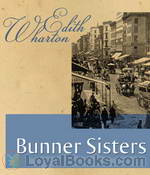 Bunner Sisters
Bunner Sisters
“Bunner Sisters,” like “The Age of Innocence” is set in 1870s New York, however the lives of Ann Eliza and Evelina Bunner reflect impoverished New York. The sisters run a “very small shop, in a shabby basement, in a sidestreet already doomed to decline.” Shabby as it is, the sisters are happy in their small orderly community of supportive women. The story tells of the destruction of this life, and how the once content sisters are thrown into the realistic world outside of their little shop. | |
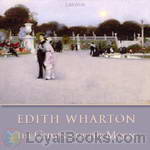 The Glimpses of the Moon
The Glimpses of the Moon
"The Glimpses of the Moon" (1922) is about Nick and Susy Lansing, both of whom live a decadent life in Europe by sponging off wealthy friends. They marry out of convenience and have an "open" relationship, but are unprepared for where their feelings will take them. | |
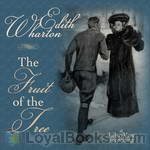 The Fruit of the Tree
The Fruit of the Tree
When published in 1907, this novel about the lives of a wealthy mill owner, her socially progressive husband and friends caused a stir due to its treatment of drug abuse, mercy killing, divorce and second marriages. | |
 Fighting France, from Dunkerque to Belfort
Fighting France, from Dunkerque to Belfort
American novelist Edith Wharton was living in Paris when World War I broke out in 1914. She obtained permission to visit sites behind the lines, including hospitals, ravaged villages, and trenches. Fighting France records her travels along the front in 1914 and 1915, and celebrates the indomitable spirit of the French people. | |
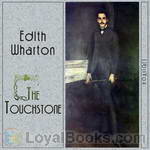 The Touchstone
The Touchstone
Stephen Glennard's career is falling apart and he desperately needs money so that he may marry his beautiful fiancee. He happens upon an advertisement in a London magazine promising the prospect of financial gain. Glennard was once pursued by Margaret Aubyn, a famous and recently deceased author, and he still has her passionate love letters to him. Glennard removes his name from the letters and sells them, making him a fortune and building a marriage based on the betrayal of another. | |
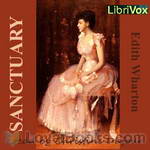 Sanctuary
Sanctuary
Kate Orme, shocked by the discovery of her fiance's complicity in a tragedy, and by society's willingness to overlook such transgressions, nevertheless marries him. Years later, her son faces a moral crisis similar to the one that showed her his father's moral weakness. (Introduction by Christine Dufour) | |
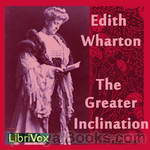 The Greater Inclination
The Greater Inclination
This is Edith Wharton's earliest published collection of short stories (1899). Like much of her later work, they touch on themes of marriage, male/female relationships, New York society, and the nature and purpose of art. One of the stories, "The Twilight of the God," is written as a short play. The role of Warland is read by mb, and the role of Oberville by Bruce Pirie. | |
 Crucial Instances
Crucial Instances
This is Edith Wharton's second published collection of short stories (1901). One of these seven stories, "Copy: A Dialogue," is written as a short play. The role of Hilda is read by Arielle Lipshaw, and the role of Ventnor by Mark F. Smith. | |
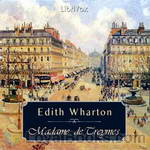 Madame de Treymes
Madame de Treymes
Edith Wharton's 1907 novella explores the milieu of Americans living abroad in Paris. New Yorker John Durham travels to Paris to woo an old flame, Fanny Frisbee, now the Marquis de Malrive. Fanny is separated from her husband and wants to marry John and return to America, but she doubts whether her Catholic husband will grant her a divorce. When John meets Fanny's sister-in-law, the enigmatic Madame de Treymes, he hopes she may be able to help them in their quest for happiness. (Introduction by Elizabeth Klett) | |
 Tales of Men and Ghosts
Tales of Men and Ghosts
Tales of Men and Ghosts was published as a collection in 1910, though the first eight of the stories had earlier appeared in Scribner's and the last two in the Century Magazine. Despite the title, the men outnumber the ghosts, since only "The Eyes" and "Afterward" actually call on the supernatural. In only two of the stories are women the central characters, though elsewhere they play important roles. Wharton enjoys subjecting her subjects -- all of them American gentlemen and gentlewomen, in the conventional senses of the word -- to various moral tests and sometimes ironic tests... | |
By: Edgar Allan Poe (1809-1849) | |
|---|---|
 The Raven
The Raven
When a modern film script draws inspiration from a poem written more than a century ago, readers can judge its impact on our collective imagination. Such is the resonance of the poem "The Raven" by Edgar Allan Poe. First published in 1845, "The Raven" is a masterpiece of atmosphere, rhythmic quality and use of language. Constructed in narrative form, it tells the story of a young man who is mourning the loss of his beloved. One December night as he wearily sits up browsing through a classical volume, a mysterious tapping against his window disturbs him... | |
 Edgar Allan Poe Poems
Edgar Allan Poe Poems
Best known for his scary tales, mystery and detective stories and imaginative fantasy stories, Edgar Allan Poe was also a gifted poet. He wrote more than 70 poems and almost all of them have been widely appreciated by readers and critics alike. This collection contains some of his most famous ones, including the immortal Raven, which combines a sense of doom and nameless despair. With its ringing, alliterative and repetitive lines and strange, supernatural atmosphere, it remains one of Poe's best known and most quoted poems... | |
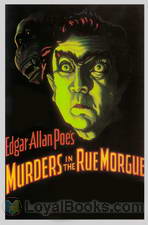 The Murders in the Rue Morgue
The Murders in the Rue Morgue
This story opens with a mother and daughter found brutally murdered inside a locked room in an upstairs apartment on a street in Paris. The police are baffled by both the ferocity of the crime and the lack of clues. Neighbors give conflicting evidence. Two friends are intrigued by the entire situation as reported in the newspapers. They decide to do a little investigating on their own. What they come up with is one of the most shocking and strangest of conclusions. The Murders in the Rue Morgue by Edgar Allan Poe is perhaps the first modern detective tale, though similar stories by Voltaire and ETA Hoffman did appear a few decades earlier... | |
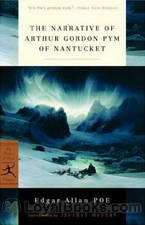 Narrative of Arthur Gordon Pym
Narrative of Arthur Gordon Pym
Published in 1838, The Narrative of Arthur Gordon Pym of Nantucket is Poe’s only complete novel and concentrates on several sea adventures gone awry. The novel follows Arthur Gordon Pym, who finds himself in the center of gloomy occurrences on board numerous vessels, as his anticipated sea adventure takes a drastic shift in the wind. Shipwreck, starvation, mutiny, near death experiences and cannibalism are just some of the issues endured in the gripping, and at times gruesome novel. The adventure... | |
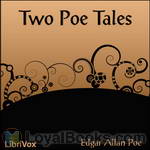 Two Poe Tales
Two Poe Tales
Edgar Allan Poe is best known for his famous short horror stories; however, horror is not the only genre in which he wrote. How To Write a Blackwood Article and its companion piece A Predicament are satirical works exploring the pieces of the formula generally seen in short horror stories (”articles”) found in the Scottish periodical “Blackwood’s Magazine” and the successful misapplication of said formula by – horrors! – a woman author! – respectively. | |
By: Henry Gray | |
|---|---|
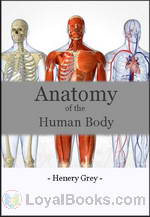 Anatomy of the Human Body
Anatomy of the Human Body
Henry Gray’s classic anatomy textbook was first published in 1858 and has been in continuous publication ever since, revised and expanded through many successive editions. This recording is of the public-domain 1918 US edition (some information may be outdated). | |
By: James Joyce (1882-1941) | |
|---|---|
 Ulysses
Ulysses
Banned in the United States and United Kingdom throughout the 1920s, Ulysses turned conventional ideas of the novel inside out with its bold new form, style and theme. Deeply rooted in the Greek myth of the hero of the Trojan War, Joyce bases his novel on Ulysses or Odysseus, who is doomed to voyage for ten years before returning home to Ithaca. Joyce had been deeply influenced by the Iliad and the Odyssey, which he had read from Charles Lamb's adaptations as a child. In fact, he considered him the epitome of the heroic ideal and constantly thought of giving the myth a new dimension in modern literature... | |
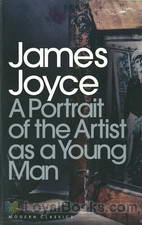 A Portrait of the Artist as a Young Man
A Portrait of the Artist as a Young Man
His family name is derived from a Greek craftsman who created the Labyrinth and designed wings for himself and his son to fly away from the island they were imprisoned in. But Stephen Dedalus, the young hero of James Joyce's first novel, is a young man who rises above his baser instincts and seeks a life devoted to the arts. This quintessential coming of age novel describes the early life of Stephen Dedalus. It is set in Ireland during the nineteenth century which was a time of emerging Irish nationalism and conservative Catholicism... | |
 Dubliners
Dubliners
A young boy falls in love with his friend's much older sister and is desperate to get her the perfect gift from the Araby Fair. After a party, a man discovers something he had never known about his wife, which has a devastating impact on their marriage. An ambitious mother schemes to get her daughter a role in a series of concerts. A drunken legal clerk takes out his frustrations on his helpless young son. These and other brilliant stories are contained in the collection entitled Dubliners... | |
 The Dead
The Dead
This novella is the final story in Joyce’s collection Dubliners. It describes a Christmas party given by Kate and Julia Morkan, two elderly Dublin ladies, that is attended by their nephew, Gabriel Conroy, and his wife. While the party is festive, full of dancing, drinking, and eating, it is also pervaded by political, religious, and sexual tensions, as well as memories of loss. When Gabriel and his wife go home at the end of the night, she reveals a long-kept secret that leads to an epiphany. | |
 Chamber Music
Chamber Music
Chamber Music is a collection of poems by James Joyce, first published in May of 1907. The collection originally comprised thirty-four love poems, but two further poems were added before publication (”All day I hear the noise of waters” and “I hear an army charging upon the land”). Although the poems did not sell well, they received some critical acclaim. Ezra Pound admired the “delicate temperament” of these early poems, while Yeats described “I hear an army charging upon the land” as “a technical and emotional masterpiece”... | |
By: Giovanni Boccaccio (1313-1375) | |
|---|---|
 The Decameron
The Decameron
Giovanni Boccaccio’s The Decameron is a collection of novellas or short novels written during the 14th century. There are 100 tales contained in the book which is presented together. The book’s title The Decameron combines the two Greek words “deka” meaning ten and “hemera” meaning day. The title can be literally translated as “ten day,” which is also the time frame in which the stories are told by the 7 young women and 3 young men. In the book, each of the ten persons took their turns to tell stories for a day... | |
By: H. Rider Haggard (1856-1925) | |
|---|---|
 King Solomon's Mines
King Solomon's Mines
King Solomon’s Mines is the story of the leader Allan Quatermain and his adventurous group of followers on their mission to find the lost brother of an aristocrat, Sir Henry Curtis. Considered similar to Robert Louise Stevenson’s novel Treasure Island, Haggard’s book proved to be another must-read adventure novel in the international literary world. The African desert hides underneath its sands myths and legends that lasted for centuries in the minds of the locals. Quatermain has a mysterious map that could lead to the ancient mines of the wise King Solomon... | |
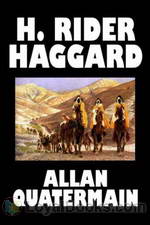 Allan Quatermain
Allan Quatermain
“An Adventurer – He that goes out to meet whatever may come!” This is the credo of Allan Quatermain, the quintessential, swashbuckling protagonist of Allan Quatermain by H. Rider Haggard. Quatermain first makes his appearance as a character in Haggard's most famous bestselling adventure tale, King Solomon's Mines. Published in 1885, this Victorian action novel depicts a group led by Allan Quatermain who travel to a remote region in Africa in search of the missing brother of one of them. It is considered the very first English adventure tale set in what was perhaps disparagingly then called the “Dark Continent... | |
 Heart of the World
Heart of the World
Set in the heart of Central America, the adventure novel accounts an enthralling tale marked by zealous adventure, discovery of a lost civilization, and unconditional love. Published in 1895, Heart of the World presents a fusion of suspense, foreshadowing, legend, unforeseen twists, and endearing characters to create a piece highly valuable in the world of fiction. Narrated by an elderly Ignatio on his deathbed, the novel recounts his great escapade alongside Englishman James Strickland as they venture off in search of a lost civilization... | |
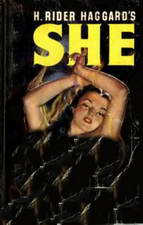 She
She
A timeless classic of fantasy literature, She is recognized as the groundwork for the lost world literary sub- genre. First published serially in The Graphic magazine from 1886 to 1887, the novel has reached critical acclaim with approximately 100 million copies sold and is regarded as one of the best-selling books of all time. Exploring themes of imperialism, lost civilization, female authority and psyche, the novel also serves as a mirror to reflect Victorian issues such as gender and race. ... | |
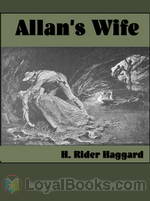 Allan's Wife
Allan's Wife
The story of Allan Quatermain's wife and further adventures of Allan Quatermain. | |
 Allan and the Holy Flower
Allan and the Holy Flower
Further adventures of Allan Quatermain | |
 The Tale of Three Lions
The Tale of Three Lions
Taking place in the heart of Africa, “The Tale of Three Lions” is one more thrilling adventure from the eventful life of old hunter Quartermain, the famous hero of “King Solomons Mines”. This time, though there are no bloodthirsty people for the old hunter to deal with, the dangers are no less. He has to face the mighty and fierce King of Animals – the Lion. | |
 Colonel Quaritch, V.C.: A Tale of Country Life
Colonel Quaritch, V.C.: A Tale of Country Life
This is not your typical H. Rider Haggard adventure book yet it is full of mystery and intrigue including a coerced marriage, bigotry, adultery, murder and a buried treasure! This is the tale of an ancient family’s struggles to survive, one woman’s selflessness and another’s evil schemes; Two Gentlemen, two scoundrels and one very underestimated, loyal servant. Listen as the tale unfolds and guess where the treasure is hidden that can save them all! | |
 The Ivory Child
The Ivory Child
Allan Quatermain's first adventure with Lord Ragnall. (Introduction by laineyben) | |
 The Wizard
The Wizard
Described by the author, best known for his King Solomon's Mines, as "a tale of victorious faith," this story begins on a Sunday afternoon in an English church. Most of the book, though, is set in Africa, and the adventure story is as engaging as any of Haggard's African tales. What makes this one different is the religious question: What has happened to miracles in the church? Is there any power left in Jesus' promise, "Whoso that believeth in me, the works that I do he shall do also, and whatsoever ye shall ask in my name, that will I do"? | |
 Black Heart and White Heart
Black Heart and White Heart
Black Heart and White Heart, is a story of the courtship, trials and final union of a pair of Zulu lovers in the time of King Cetywayo. (Introduction by H. Rider Haggard) | |
 Eric Brighteyes
Eric Brighteyes
The Saga of Eric Brighteyes is the title of an epic viking novel by H. Rider Haggard, and concerns the adventures of its eponymous principal character in 10th century Iceland. Eric Thorgrimursson (nicknamed 'Brighteyes' for his most notable trait), strives to win the hand of his beloved, Gudruda the Fair. Her father Asmund, a priest of the old Norse gods, opposes the match, thinking Eric a man without prospects. But deadlier by far are the intrigues of Swanhild, Gudruda's half-sister and a sorceress who desires Eric for herself. She persuades the chieftain Ospakar Blacktooth to woo Gudrida, making the two men enemies. Battles, intrigues, and treachery follow. | |
By: Stephen Leacock (1869-1944) | |
|---|---|
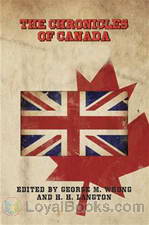 Chronicles of Canada -- Dawn of Canadian History: Aboriginal Canada
Chronicles of Canada -- Dawn of Canadian History: Aboriginal Canada
Most readers of Stephen Leacock's works are familiar with his witty and humorous writings, but few may be aware that he was also a gifted teacher, political ideologue, economist and fiction writer. Though he wrote six books on Canadian history, none of them attained the status of a standard text on the subject and were regarded more as opinion pieces without much academic foundation. Yet, the Chronicles of Canada series by Stephen Leacock remains an interesting and entertaining read. In this volume, Dawn of Canadian History: Aboriginal Canada, which is part of a thirty-two book series of short and simple essays, Leacock explores the little known origins of Canada's past... | |
 Sunshine Sketches of a Little Town
Sunshine Sketches of a Little Town
Known as the Canadian Mark Twain, Stephen Leacock was a humorist whose gentle parodies and spoofs still evoke a smile and a chuckle more than a hundred years after they were first published. Sunshine Sketches of a Little Town was published in 1912. Set in the fictional town of Mariposa in Canada, which is peopled by a delightful assortment of characters, the book has proved to be an enduring classic in the humor genre. Readers around the world continue to enjoy these little stories about the inhabitants of Mariposa because Leacock portrays people whom we have all met at some time or the other in our own lives... | |
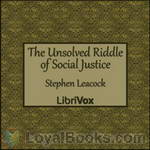 The Unsolved Riddle of Social Justice
The Unsolved Riddle of Social Justice
This lengthy political essay by noted Canadian humourist Stephen Leacock was written while he was professor of political economy at McGill University. He argues for a middle ground between individualism/capitalism and pure socialism. Listeners in the early 21st century may find this 90-year old essay oddly topical. | |
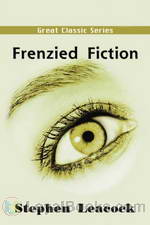 Frenzied Fiction
Frenzied Fiction
From the cave man to Santa Claus; spies, know-it-alls, and journalists: all are fair game for Leacock’s special brand of humor. He touches on the changes time has brought about in the city, education, and work habits. Among the other topics in this work are nature, fishing, gardening, success, and spirits–both of the departed and of the variety Prohibition prohibited. Each chapter of this book is a standalone story and if you love a good laugh, these stories are for you. In me, Leacock’s wit produced the full range of laughter: smiles, chuckles, guffaws, and some uncontrollable giggles. Also, occasionally, I found myself shedding a tear or two. (Review by Debra Lynn) | |
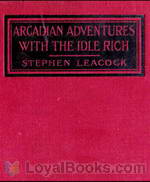 Arcadian Adventures with the Idle Rich
Arcadian Adventures with the Idle Rich
“Arcadian Adventures with the Idle Rich” is a work of humorous fiction by Stephen Leacock first published in 1914. It is the follow-up to his 1912 classic “Sunshine Sketches of a Little Town.” Like that work, it is a sequence of interlocking stories set in one town, but instead of focusing on a small Canadian town in the countryside, it is set in a major American metropolis and its characters are the upper crust of society. Although currently not as well-known as the earlier book, “Arcadian Adventures” was extremely popular in North America at the time of its publication and for a while was considered the greater success... | |
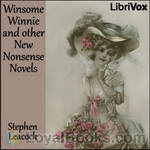 Winsome Winnie and other New Nonsense Novels
Winsome Winnie and other New Nonsense Novels
Eight silly stories by Canadian humourist Stephen Leacock. | |
 Soaked In Seaweed and 7 other Nonsense Novels
Soaked In Seaweed and 7 other Nonsense Novels
8 great spoofs of 'types' of fiction by the premier Canadian humorist Leacock, taken from his book Nonsense Novels. The title of each parody gives away it's genre. Soaked in Seaweed or, Upset in the Ocean; Maddened by Mystery: or, The Defective Detective; "Q." A Psychic Pstory of the Psupernatural; Guido the Gimlet of Ghent: A Romance of Chivalry; The Man in Asbestos: an Allegory of the Future; Sorrows of a Super Soul: or, The Memoirs of Marie Mushenough; A Hero in Homespun: or, The Life Struggle of Hezekiah Hayloft and Caroline's Christmas: or, The Inexplicable Infant... | |
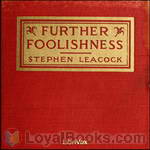 Further Foolishness
Further Foolishness
Seventeen goofy stories and essays by Canadian humourist Stephen Leacock. "Professor Leacock has made more people laugh with the written word than any other living author. One may say he is one of the greatest jesters, the greatest humorist of the age." – A. P. Herbert (Introduction by TriciaG & Wikipedia) | |
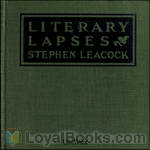 Literary Lapses
Literary Lapses
Short sketches relating the humourous side of life in 1910. "Professor Leacock has made more people laugh with the written word than any other living author. One may say he is one of the greatest jesters, the greatest humorist of the age." – A. P. Herbert | |
 The Hohenzollerns in America
The Hohenzollerns in America
More stories by Canadian Stephen Leacock. Some of these stories carry over characters introduced in Further Foolishness. Some stories are humourous; some are more thoughtful. It helps to be familiar with WWI-era European politics to catch much of the humour. Full title: The Hohenzollerns in America With the Bolsheviks in Berlin and Other Impossibilities | |
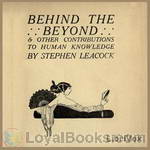 Behind the Beyond
Behind the Beyond
A collection containing a parody on Problem Plays, as well as humorous anecdotes from Canadian humourist Stephen Leacock. | |
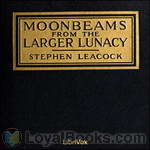 Moonbeams from the Larger Lunacy
Moonbeams from the Larger Lunacy
Humorous, ironic, and sometimes cynical observations of life in 1915 from Canadian humourist Stephen Leacock. | |
 Chronicles of Canada Volume 20 - Adventurers of the Far North
Chronicles of Canada Volume 20 - Adventurers of the Far North
This is volume 20 ofThe Chronicles of Canada series. This volume describes the explorers who braved the Canadian Arctic in search of the Northwest Passage, focusing on Samuel Hearne, Sir Alexander Mackenzie, and Sir John Franklin. | |
By: George MacDonald (1824-1905) | |
|---|---|
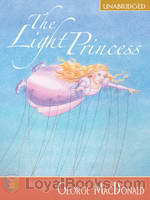 The Light Princess
The Light Princess
A king and queen are in despair. After years of marriage, they are yet to be blessed with a child. Finally a lovely daughter is born to them. They plan a grand christening ceremony for the baby, but as destiny would have it, they forget to invite the nastiest lady in the kingdom, who also happens to be the king's sister, the evil Princess Makemnoit. Now if all that seems distinctly familiar to you, it was meant to! Using the Sleeping Beauty/Briar Rose fairytale as a starting point, Scottish writer George MacDonald creates a story that's even more enchanting and gives it a nice little twist... | |
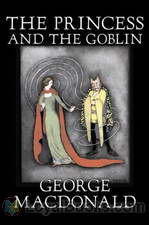 The Princess and the Goblin
The Princess and the Goblin
George MacDonald’s fairy stories and fantasy have inspired a number of writers including C.S. Lewis and J.R.R. Tolkien and of this popular fairy story, which as you might suspect concerns a little princess plotted against by a race of goblins, G.K. Chesterton said that it “made a difference to my whole existence.” | |
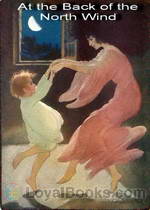 At the Back of the North Wind
At the Back of the North Wind
Written by the man who mentored Lewis Carroll and encouraged him to submit Alice for publication, At the Back of the North Wind is today a forgotten classic of Victorian children's literature. The story tells of a young boy named Diamond, the son of a coachman in an English country mansion. Diamond sleeps in the hayloft above the stables and at night he finds he's disturbed by the wind blowing through the holes in the wall. He tries to plug them but one night, he hears an imperious voice scolding him for doing this! It is the magnificent North Wind that speaks to him and tells him that he's closed up her windows... | |
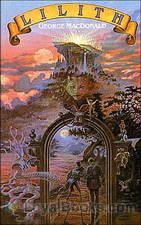 Lilith
Lilith
A fantasy novel first published in 1895, Lilith follows a young man on his inter-dimensional journey of spiritual discovery, as he acquaints himself with his family’s past and unearths a life-changing secret. Moreover, it deals with the introspection of its protagonist, as he is hurled into a mysterious setting where he encounters bizarre creatures that challenge the validity of his temporal values. Examining issues including the essence of life, wisdom, death, redemption, and salvation, the novel presents a masterfully woven plot that marks the piece as one of MacDonald’s darkest and most intense contributions to the fantasy genre... | |
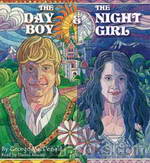 The Day Boy and the Night Girl
The Day Boy and the Night Girl
First appearing in Harper’s Young People as a serial, the piece focuses on the extraordinary tale of a young boy and a girl who have been brought up in a secluded and controlled environment by a wicked witch, incognizant of the world outside of their custom tailored settings. Enriched with magic, fantasy, romance, and allegory, The Day Boy and the Night Girl is a great instance of MacDonald’s excellent use of metaphors to express a deeper meaning to a seemingly simple fairy tale. The novel begins with the introduction of Watho, a wicked witch who has an insatiable thirst for knowledge... | |
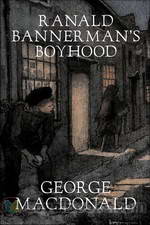 Ranald Bannerman's Boyhood
Ranald Bannerman's Boyhood
George MacDonald is mainly known for his fantasy works and fairy tales such as At the Back of the North Wind and The Princess and the Goblin. However, during his life he was more famous for many more realistic novels. . . among them the somewhat autobiographical Ranald Bannerman’s Boyhood. This story of a young motherless boy growing up with his brothers in a Scottish manse is full of delightful characters. There is Kirsty, an enchanting Highland storyteller, Turkey, the intrepid cowherd, the evil Kelpie, and the lovely Elsie Duff... | |
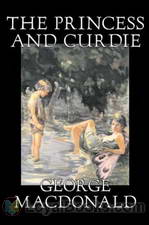 The Princess and Curdie
The Princess and Curdie
The Princess and Curdie is the sequel to The Princess and the Goblin by George MacDonald. It’s been a year since the Princess Irene and Curdie first met, and a year since the goblin incident and all appears to be going well in the Kingdom. Or is it? After a visit from Irene’s great-great-grandmother, Curdie finds himself on a mission to save the kingdom, with a rather strange companion in tow. | |
 The Wise Woman
The Wise Woman
George MacDonald was an influential Scottish author, poet, and Christian minister. MacDonald’s works (particularly his fairy tales and fantasy novels) claimed the admiration of such authors as J. R. R. Tolkien, C. S. Lewis, and Madeleine L’Engle. The Wise Woman fairy tale was one of MacDonald’s more popular works. This delightful story describes how a woman of mysterious powers pays visits to two very different young girls: one a princess, the other a shepherd’s daughter. Neither girl is left unchanged by the startling events that are unleashed as a result: and the reader is confronted by astonishing fairy-worlds in which the girls are forced to choose between good and evil... | |
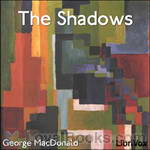 The Shadows
The Shadows
“Old Ralph Rinkelmann made his living by comic sketches, and all but lost it again by tragic poems. So he was just the man to be chosen king of the fairies…” George MacDonald (December 10, 1824 – September 18, 1905) was a Scottish author, poet, and Christian minister. Though no longer well known, his works (particularly his fairy tales and fantasy novels) have inspired admiration in such notables as W. H. Auden, J. R. R. Tolkien, and Madeleine L’Engle. The Shadows is one such fairy tale... | |
 The Hope of the Gospel
The Hope of the Gospel
Perhaps most well-known for his fairytales and fantasy stories such as The Golden Key and Phantastes, or for his poetry, George MacDonald was a great spiritual master of the nineteenth century. He spent several years as a minister in his native Scotland; however he was forced to resign his position due to ill health. He had a profound influence on such later writers as G. K. Chesterton and C. S. Lewis – the latter of whom considered MacDonald to be his spiritual father, and edited an anthology of his works... | |
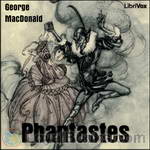 Phantastes
Phantastes
A young man named Anodos experiences dream-like adventures in Fairy Land, where he meets tree-spirits, endures the presence of the overwhelming shadow, journeys to the palace of the fairy queen, and searches for the spirit of the earth. The story conveys a profound sadness and a poignant longing for death. (Brad Powers) | |
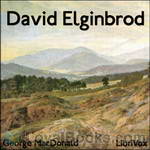 David Elginbrod
David Elginbrod
David Elginbrod was George Macdonald’s first real success, a novel of Scottish country life. Published in 1862, it was dedicated to the memory of Lady Noel Byron. | |
 The Light Princess & Other Fairy Tales
The Light Princess & Other Fairy Tales
George MacDonald claimed that he did not write for children, but for the child-like. Some of his longer works are clearly intended for adults, and this fantastic fiction influenced later writers such as G.K. Chesterton, J.R.R. Tolkien and C.S. Lewis. But you can find some of his best writing in the stories aimed squarely at children, and these are three of the finest.The Light Princess. A wicked aunt curses her baby niece so that gravity has no effect on her, and she floats through the air as if it were water... | |
 The Lost Princess (or A Double Story, or The Wise Woman)
The Lost Princess (or A Double Story, or The Wise Woman)
Also known as "A Double Story" or "The Wise Woman."The story of two very spoiled girls, a princess and a peasant, who are kidnapped by a strange woman for a lesson in life. They may not emerge the same... but will their parents be changed for the better too? | |
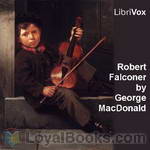 Robert Falconer
Robert Falconer
A Victorian novel devoted to beloved character first introduced to readers in MacDonald's David Elginbrod. | |
 Mary Marston
Mary Marston
Written at the height of George MacDonald's literary career, the story centers around the life of a simple merchant's daughter. Mary Marston's unswerving commitment to love, God, and others is contrasted with a backdrop of an array of characters and a complex and sometimes mysterious plot. It is a story of a woman who loves a man, and teaches him to change. Not out of his love for her, but simply because it was the right thing to do. MacDonald allows the characters a range from delightful to devious. As such, they were intended to serve as models. His message is that all eventually must stand before God. | |
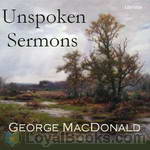 Unspoken Sermons
Unspoken Sermons
George MacDonald was a Scottish author, poet, and Christian minister. In his day he was considered one of the great Victorian authors on par with Dickens, Thackeray, Kipling and the like. His reputation as an author, however, has not fared as well largely because of the ubiquitous and fervent presence of religion throughout his works.MacDonald's theology, though sprinkled liberally throughout his fairly substantial number of books, is perhaps nowhere more palpable than in Unspoken Sermons. These sermons, though by no means amongst the most popular of MacDonald's work, have had theological impact from their first appearance... | |
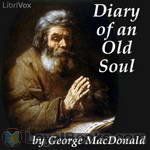 Diary of an Old Soul
Diary of an Old Soul
George MacDonald, a Scottish pastor, wrote these short poems, one for each day of the year, to help him with the severer misfortune he was experiencing. The poems are filled with hope and promises of Christ, yet, he also writes about his doubts. These poems are wonderful to listen to for people of any religion. | |
 St. George and St. Michael, Volume 1
St. George and St. Michael, Volume 1
’St. George and St. Michael’ is a little-known historical romance telling the story of a young couple who find themselves on opposing sides during the tumultuous years of the English Civil Wars.Tensions are rising between king and parliament; the Church of England and the numerous independent puritans and rumours abound that Charles I will soon declare open war on the dissident elements within his realm. Seventeen-year-old Dorothy Vaughan knows little of the brewing conflict, yet is sure that her loyalty must be with her king and her nation... | |
 The Cruel Painter
The Cruel Painter
This is the story of a daring college student's quest to win the icy heart of a beautiful girl. Unfortunately, the girl is the daughter of a cunning and sadistic master artist, who takes the student as an apprentice with the express intent of torturing the youth with his own hopeless love. The story is set in late 16 century Prague, amid mysterious happenings and the terrifying rumors of a vampire on the loose. | |
 Flight of the Shadow
Flight of the Shadow
A fantastical story of personal growth and a warning against the dangers of keeping secrets. This novel by George MacDonald is a deceptively easy read aimed to be accessible to teens, but the ideas will remain in your mind long afterwards. Beautifully written in the style of Gothic Novels of the nineteenth century, a story about relationships and redemption, secrets and confessions and an inspiring example of how to live in the light. | |
 Miracles of Our Lord
Miracles of Our Lord
Actions, it is often said, speak louder than words. But in the life of Christ - as George MacDonald shows - both spoke with an equal volume. Much attention is often devoted to what Jesus said while He was on earth, but many in our modern age are puzzled by the miracles. What are we to make of them? MacDonald - wise and gentle as ever - invites us into the miracles as a doorway into the inner life of Christ that we may intimately know Him and His Father. | |